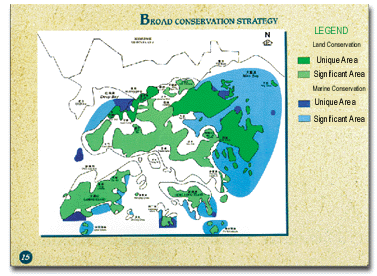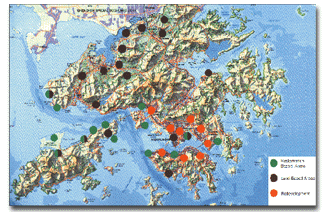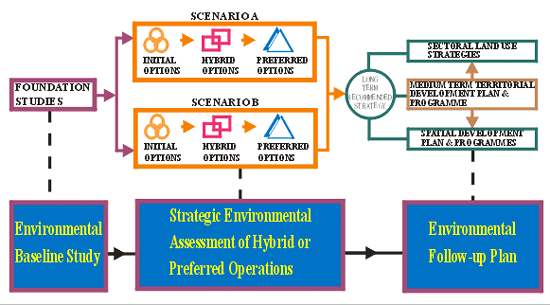Case 7 - Territorial Development Strategy Review 1996
Key Environmental Outcomes or Influences
- Major policy issues were raised at the highest level of the Hong Kong Special Administrative Region Government.
- Elimination of major environmentally unacceptable and undesirable development options, such as the filling up of Rambler Channel.
- Identification of environmental constraints and potential adverse impacts due to the preferred options, such as the identification of potential air quality and sewage problems, and recognition of the conservation value of various environmentally sensitive areas.
- Consideration of indicative mitigation requirements and outline environmental follow up plans and sectoral policies, such as vehicle emission control, sewage infrastructure provision, and better transport planning.
- Provided key input to informed public debate raising the awareness on the need for environmentally sustainable development.
- Commitment from the highest level obtained to embark on a comprehensive sustainable development study - Study on Sustainable Development for the 21st Century (SUSDEV 21).
Type of Strategic Environmental Assessment (SEA)
Strategic level environmental assessment of the medium term and long term territorial development strategies.
Nature and Scope of the Proposal
Strategic land use - transport -environment framework for Hong Kong up to year 2011 to cater for a total of 8.1 million population.
Basis of SEA Requirement
A requirement to provide information on environmental implications in the submissions to the highest level decision making body (the Executive Council ) in Hong Kong.
Downstream EIA requirements for individual projects arising from the strategy.

Environmentally Sensitive Aeras Protected from Development
Study Arrangement
The Review was commissioned by the Planning Department of Hong Kong.
The SEA was overseen by an inter-departmental Environmental Study Management Group chaired by the Environmental Protection Department.
Relationship with Decision Making
SEA findings were published for public consultation and the results of consultation were utilized in making final decisions on the recommended development strategy.

Potential Strategic Growth Areas
Alternatives or Options Assessed
2 scenarios and more than 22 options were assessed.
Methods and Techniques
Environmental Baseline Study on environmental carrying capacity and sustainability.
Territory-wide models to assess cumulative environmental implications on sewage, water quality, noise, air quality, waste disposal and ecology.
Latest Status
Strategic Growth Areas and high priority schemes had been identified. They will be subject to another level of environmental assessment to provide more detailed environmental information prior to implementation.
Leads to the commencement of SUSDEV21 in September 1997. SUSDEV21 was completed in 2001 and recommended a system to evaluate the sustainability of major policy proposals.

Strategic Environmental Assessment Process in Territorial Development Strategy Review